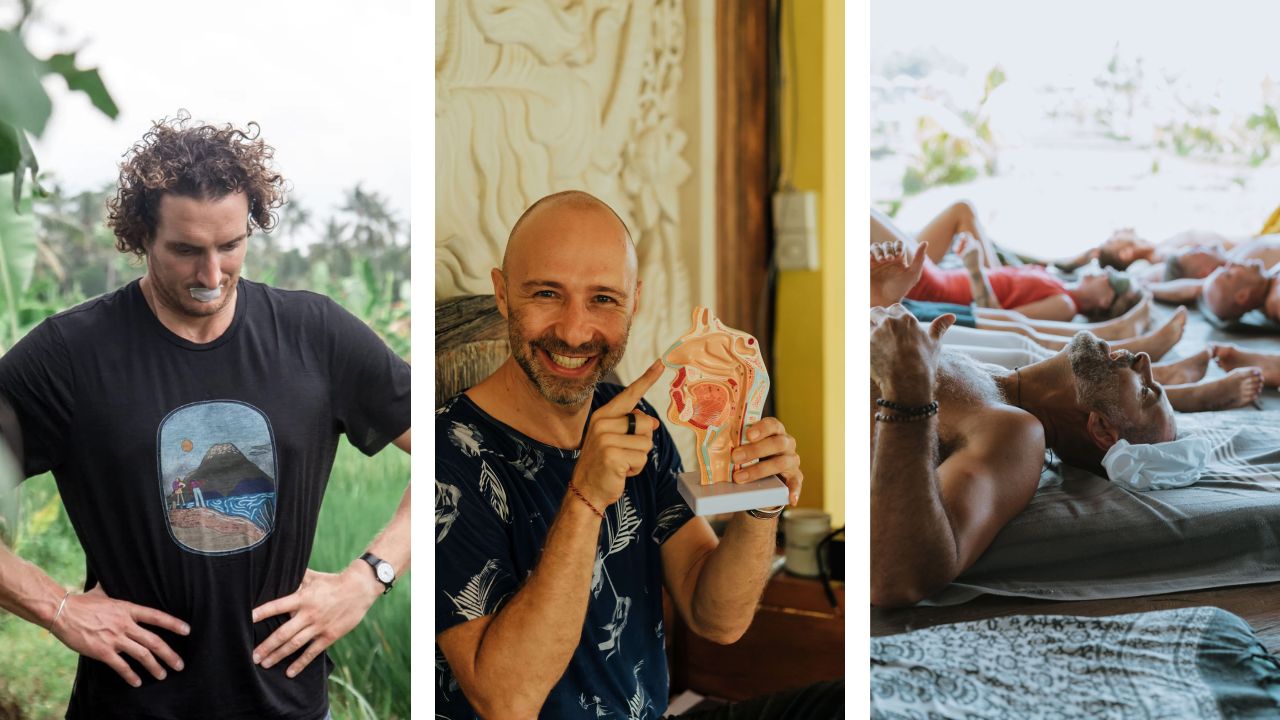In the past few years, Breathwork has gained traction globally thanks to people like Wim Hof.
There are so many espoused benefits of Breathwork, at different levels – physical, mental, emotional and some might even say spiritual.
There are many variables involved with Breathwork. The benefits will very much depend on the type of Breathwork you are doing, the frequency, how you are practicing it, when you are practicing and what is going on for you in the moment and your health etc.
It is important to remember Breathwork is not a cure-all, it is not a silver bullet!
And not all types of Breathwork are safe for everyone
Your breath and your autonomic nervous system
Fundamentally, the breath is your gateway to your autonomic nervous system.
You probably have heard about the autonomic nervous system and its two branches – the sympathetic (aka ‘fight/flight/freeze’ mechanism) and the parasympathetic nervous system (aka ‘rest and digest’ or ‘feed and breed’ system!).
The autonomic nervous system is like your body’s command centre.
It guides almost everything you do, think, say or feel. Your nervous system affects so many aspects of your health, including your:
- breathing
- heartbeat
- thoughts, memory, learning, and feelings
- movements, such as balance and coordination
- senses, including how your brain interprets what you see, hear, taste, touch and feel
- sleep, healing and aging
- response to stressful situations
- digestion, as well as how hungry and thirsty you feel
- immune system
How you breathe influences your nervous system and what is happening with your nervous system influences how you breathe.

It’s a bit like the ol chicken or egg! What comes first?
Well, it can be a self-perpetuating cycle. When we are stressed, we often breathe in a rapid and shallow way through the mouth which is indicative of the fight/flight/freeze response.
If we have a tendency to generally breathe in a faster, shallow way through the mouth, even in non-stressful situations, we are mimicking how we breathe when we are stressed – this activates the fight/flight/freeze response in our nervous system. We’re instructing our body to be stressed when we breathe in this way!
Happily though – the converse is true – when we are relaxed, we naturally tend to breathe slowly, softly and draw air down deeper into our lungs.
When we deliberately do this, we can influence our autonomic nervous system toward the ‘rest and digest’ branch – soothing our body’s physiology and helping us to feel calmer and more relaxed, promoting meditative states of mind and assisting us to sleep.
There are many different types of evidence-based relaxation breathing techniques including the Box Breath, Coherent Breathing, Physiological Sigh and some of the yoga breathing techniques (pranayama).
Often people are first introduced to Breathwork through practicing techniques that relax the nervous system.
But the term Breathwork covers a whole variety of techniques, from those that relax the nervous system, to breathing patterns that are temporarily more activating and stimulating such as the Wim Hof method.
In my work in Bali with BreathingCold, I offer experiences through a variety of breathing techniques – both activating and calming. Plus, we also play with different powerful modalities such as cold water immersions (aka ice baths!), sound, movement and connection practices – in groups or private sessions for 1 day and 2 day workshops, retreats and Breathwork Facilitator Training. I’ve found that balancing activating techniques with breathing patterns that help down regulate the nervous system to be the really effective with Breathwork. I also offer an in-depth online course all about the Breath.
Breathwork with BreathingCold in Bali
What about the activating breathing techniques?
It’s pretty obvious why we would want to change our breathing down to be slow, deep and steady to influence relaxation, but why would we want to breathe in a way that is activating to our nervous system?
Many people report feeling more energised, having more clarity, increased problem solving abilities and creativity by deliberately using breathing techniques such as ‘conscious connected’ breathing and ‘breath holds’.
Some of the more intensive practices such as Holotropic Breathwork are known to invoke intensive emotional releases and facilitate altered states of consciousness (‘getting high on your own supply’ as Wim Hof famously states).
While activating breathing techniques do stimulate the sympathetic nervous system (our fight/flight/freeze or stress response), it is done intentionally in a controlled way for a set amount of time. Often they can be followed with calming breathing techniques to soothe the nervous system – which is how the BreathingCold method works.
That sounds positive and beneficial, or is it?
The short answer is yes and no.
Many of the dynamic activating breathing patterns, including the Wim Hof method, may be harmful if you have a number of health conditions including (but not limited to):
- respiratory conditions
- high or abnormal blood pressure
- epilepsy, history of seizures, stroke or aneurysm
- cardiovascular disease
- osteoporosis
- recent surgery
- glaucoma or detached retina
- pregnancy
Importantly, because these types of techniques are activating the fight/flight/freeze response, strong caution needs to be taken for any mental health conditions and if you have experienced trauma.
Breathwork can be powerful and healing physiologically and mentally, but can also be extremely dangerous for some people.
In ancient yogic traditions, breathing techniques (known as pranayama) are cautioned to be only practiced if you are an advanced student and have prepared your body over time.
Before embarking on the exploration of dynamic breathwork, it is wise to work with an experienced Breathwork Facilitator who has trained in trauma informed Breathwork. If you have acute or chronic mental health conditions or any of the physical conditions listed, then this is even more important.
An experienced Breathwork Facilitator can work with you to help ensure you are safe and well held in your exploration into Breathwork and that your experience is tailored to your needs.

Transformational Breathwork Facilitator Training
What about day-to-day breathing?
A final note – I find it absolutely fundamental to touch on functional breathing when I work with people and in our Breathwork Facilitator Training.
People rarely have any idea what it means or even think about how they are breathing day-to-day, and they can go through life not breathing correctly, which is likely to have negative effects in all aspects of their life.
According to Patrick McKeown from Oxygen Advantage whose functional breathing method is based on the Buteyko method, we should all be breathing through the nose at all time (except during intensive exercise), in a soft, slow, light rhythm.
Fad or fact?
There are many studies that have shown Breathwork can help reduce symptoms associated with stress release, anxiety, depression, insomnia, post traumatic stress disorder (PTSD), and attention deficit disorder (ADD) and much more.
My experience working with thousands of people over the years and training hundreds of Breathwork Facilitators has shown me the power of Breathwork.
This is such an individual thing, as I’ve said, not all techniques are good for all people all of the time, and working with an experienced Breathwork Facilitator is really important, especially if you are looking to work with dynamic activating patterns.
If in doubt – less is more in your Breathwork practice.
Happy breathing!

